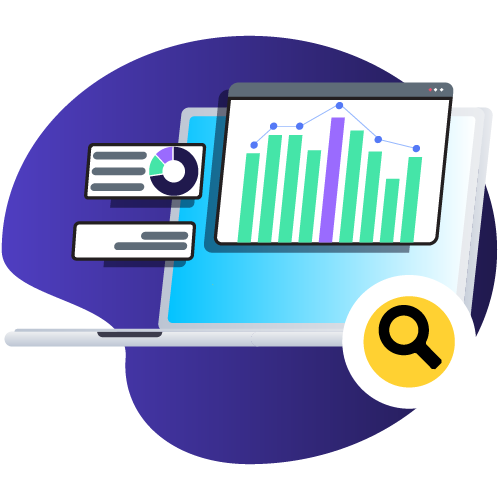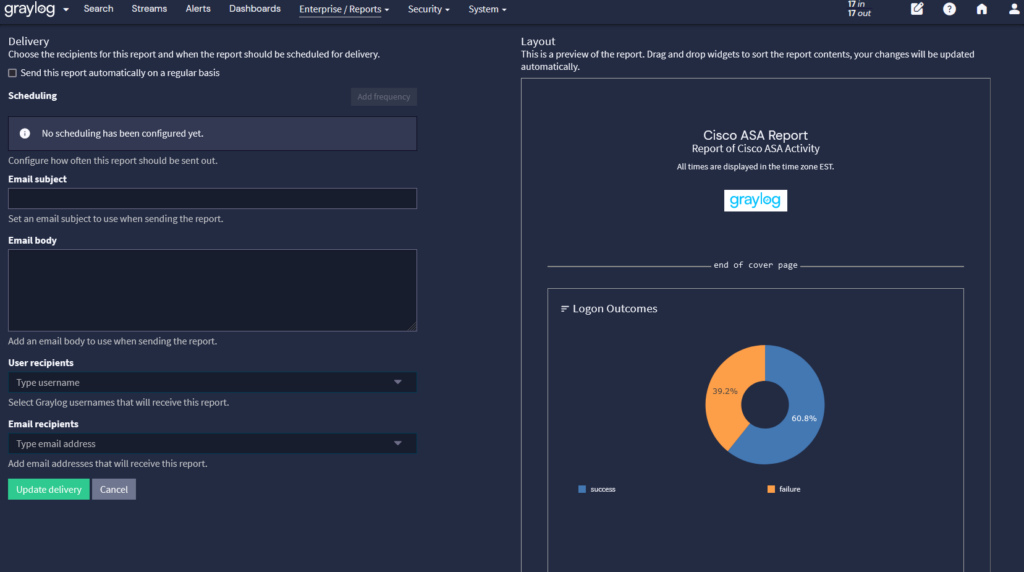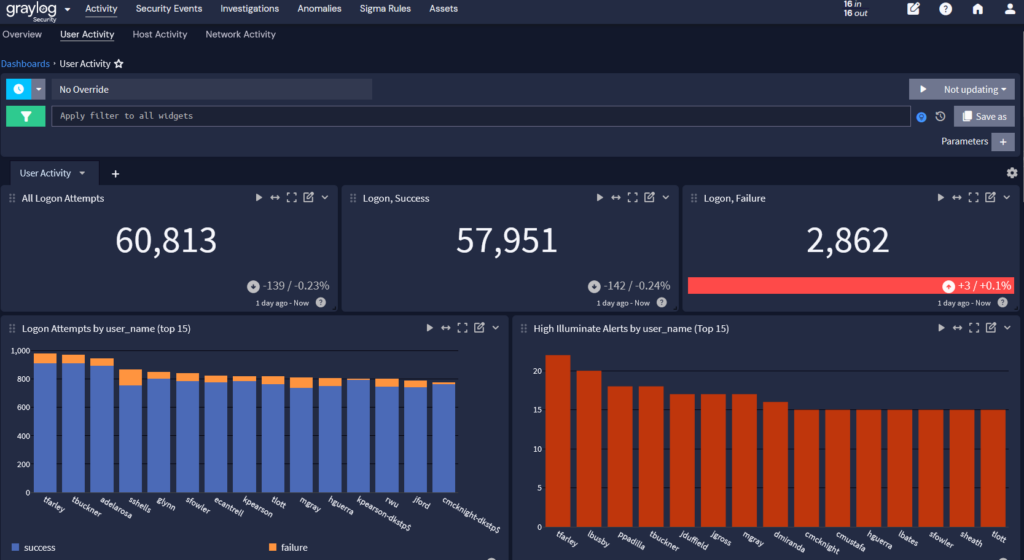At the core of reports and dashboards is a versatile framework that supports prebuilt and custom dashboard creation. This flexibility enables users to create their analytics views to specific needs, enhancing the decision-making process. Users can drag and drop various data visualization widgets, configuring them to display the most relevant data for their specific use cases. Once created, share your visualizations with others in your Graylog environment.


























